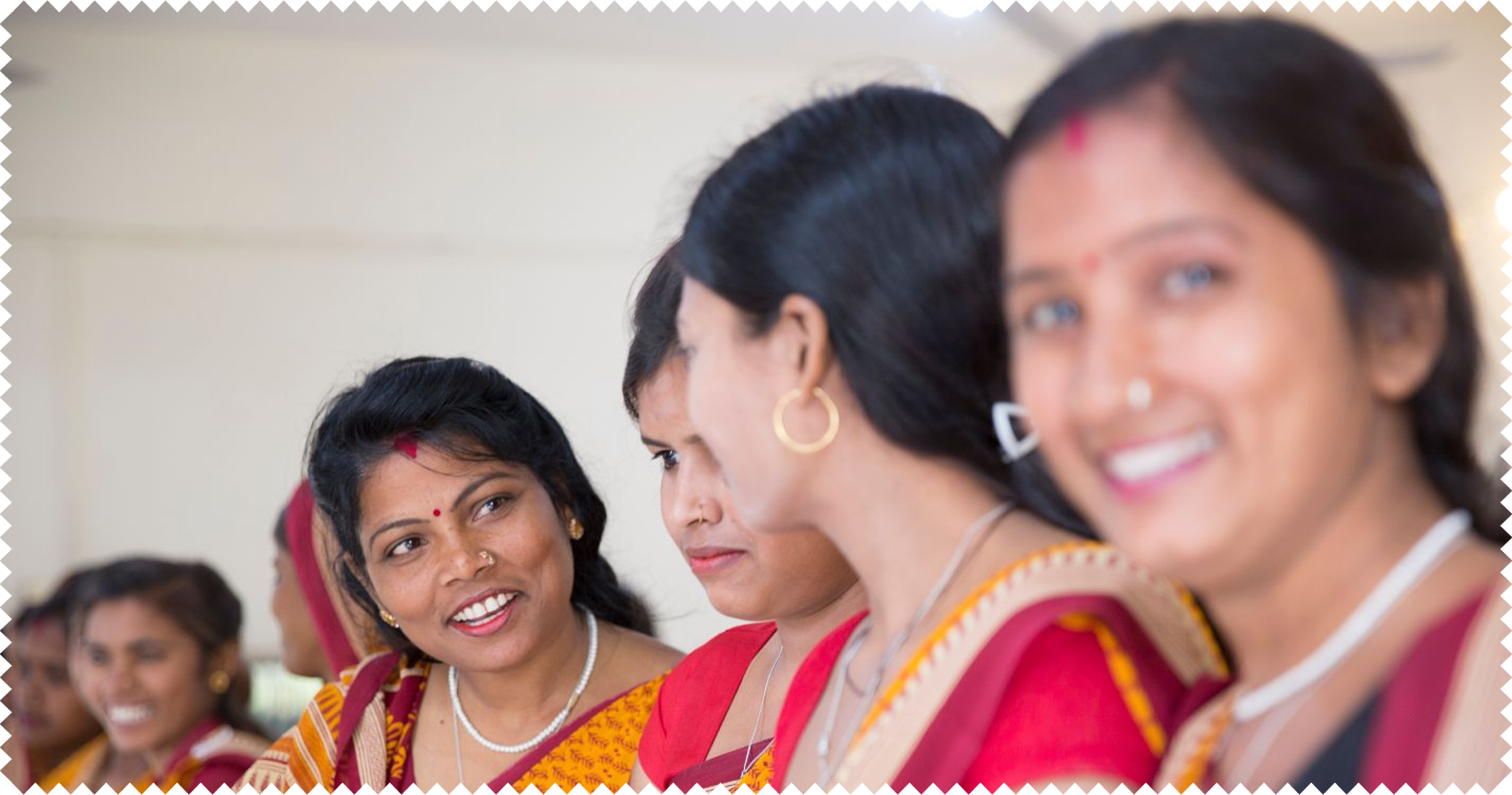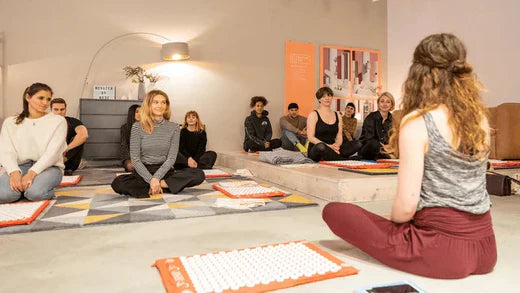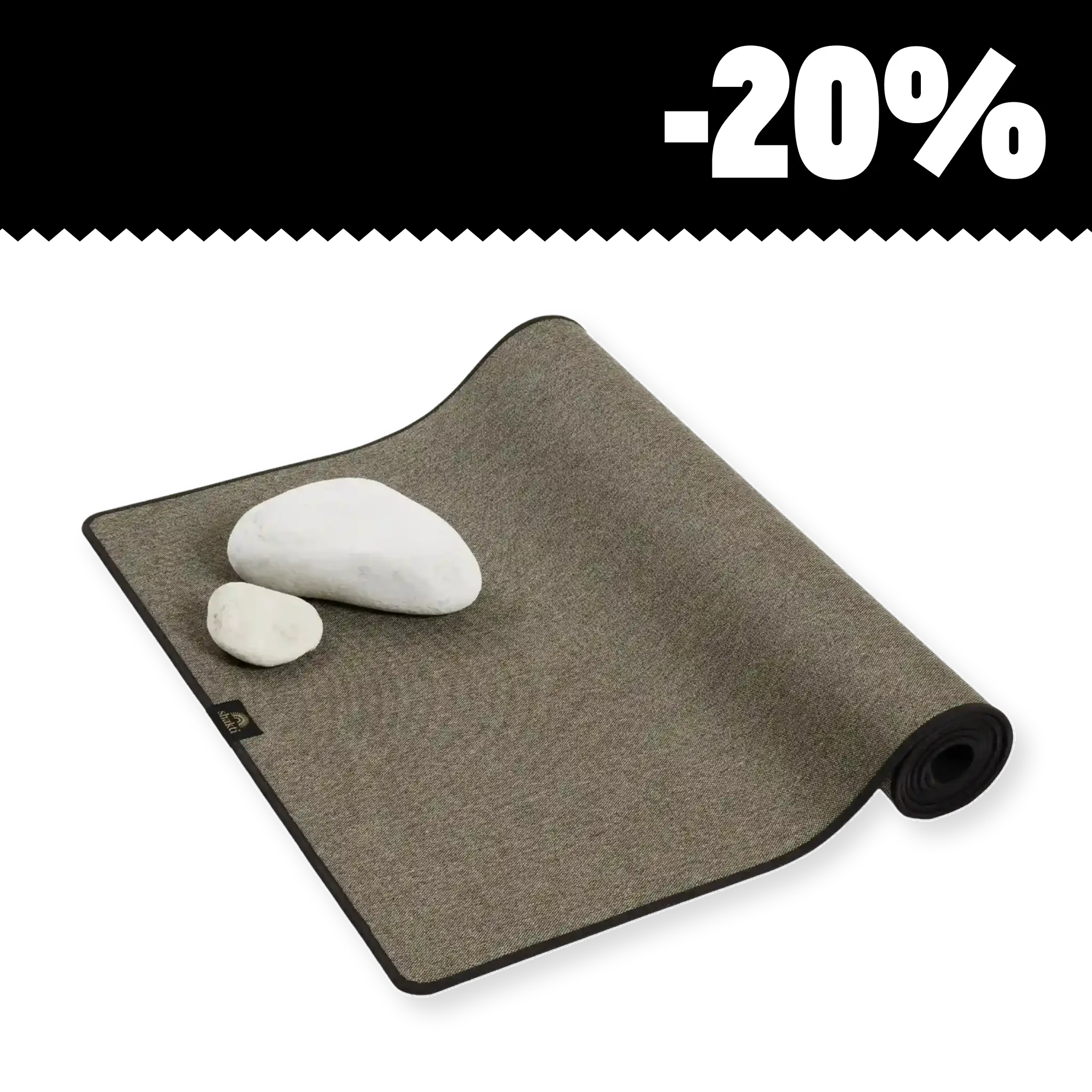Yoga is now on everyone's lips - or rather, it has arrived in all sports studios, living rooms and the like. Many enthusiastic yogis roll out their mats every day all over the world to take time for themselves, their mind and their body. To mark World Yoga Day, we would like to highlight the practice and its many facets and benefits for you - including some yoga exercises.
The core of yoga consists of the so-called asanas, the postures or yoga exercises, which often have figurative and symbolic names such as "Downward-Facing Dog" or "Tree". These postures not only promote flexibility and muscle strength, but also stimulate important bodily functions such as the heart, digestion and circulation. The aim is to achieve physical health and mental balance by practicing these poses regularly. Breathing techniques, known as pranayama, are also essential to the practice as they control the flow of energy in the body and improve the ability to concentrate. At best, conscious breathing will lead you to a deeper self-awareness and inner peace. Finally, meditation rounds off the practice by calming the mind and promoting a stable inner attitude.
If you are still a yoga beginner, this blog post will tell you everything you need to know. In addition, to coincide with International Yoga Day on June 21, we will introduce you to some yoga exercises with different levels of difficulty that target different areas. These include very simple yoga exercises for beginners, which are perfect for getting started with the almost 3,500-year-old philosophical teaching. So: let's get started!
Content
1. yoga exercises: What does yoga actually mean?
2 Is yoga suitable for me? Are there any restrictions?
3 What types of yoga exercises are there?
4. yoga for the back: Exercises & tips
5. which yoga exercises counteract tension in the neck?
6. which yoga exercises are ideal for runners?
7. the best yoga exercises for beginners - our top 3
8. what do I need for yoga exercises at home?
Yoga exercises: What does yoga actually mean?
Before we take a look at the various yoga exercises, let's first ask ourselves: What does yoga actually mean? Yoga is a millennia-old practice from India that unites body, mind and soul into a harmonious whole. It is therefore much more than just a sport - for many, yoga is a lifestyle that is celebrated annually on June 21 during World Yoga Day.
The philosophical and physical practice path strives for inner balance and mindfulness. Whether you are looking for yoga exercises for beginners over 50 or exercises for yoga with children - yoga is open to everyone, regardless of age, gender or cultural background. It combines physical exercise with spiritual growth and mindfulness, bringing numerous benefits. The effects go far beyond pure relaxation: studies have shown that yoga can alleviate complaints such as back pain, headaches and even depression. The variety of yoga styles, from gentle and restorative to challenging and energetic, shows how universal and adaptable this practice is. Regardless of individual goals and needs, everyone can benefit from yoga - be it through increased flexibility, improved muscle strength or mental clarity.
Is yoga suitable for me? Are there any restrictions?
If you've never tried yoga before, you may be wondering whether it's even suitable for you. In the vast majority of cases, the answer is a resounding yes! Yoga is a highly adaptable practice that is suitable for people of all ages and fitness levels. Many yoga styles and classes offer a wide range of intensities and focuses, so there are always options to suit individual needs. This means that both beginners and advanced practitioners can always discover something new to develop their practice. It is important to keep the following in mind:
- For people with specific health problems or injuries, it is important to take precautions and speak to a doctor if necessary before starting yoga. Especially with conditions such as high blood pressure, eye problems or heart disease, it may be necessary to modify or even avoid certain yoga exercises. The same applies to acute pain and recent operations, where certain movements can have a negative impact on the healing process. In such cases, it is advisable to seek professional advice in advance to ensure that the chosen exercises are safe.
- Every body is unique and has individual needs and limits. It is therefore essential to pay attention to your own physical signals and respect them. Overstraining yourself or striving for perfection can quickly lead to injury and frustration. Instead, yoga practice should be seen as a continuous learning process in which progress is made step by step. For older people or those with limited mobility, there are special styles of yoga such as chair yoga or gentle variations of hatha and restorative yoga that are gentler and more accessible.
- The aim is to create a comfortable and safe environment where everyone can benefit from the health benefits of yoga without putting unnecessary stress or pressure on the body. Ultimately, yoga should be perceived as a personal journey begun with patience and mindfulness. Regardless of age and physical constitution, yoga offers everyone the opportunity to promote balance, flexibility and mental well-being, provided the practice is tailored to individual needs.
What types of yoga exercises are there?
Yoga is a versatile practice that has given rise to many different styles and techniques over the centuries, each with its own focus and intensity. Thanks to this diversity, everyone can find a style of yoga that suits their needs and preferences - regardless of whether they are looking for a physical challenge, mental clarity or simply relaxation.
- Hatha yoga is one of the best known and most widespread styles. It places particular emphasis on the physical yoga exercises, the asanas, and combines these with breathing techniques and meditation. It is ideal for beginners as it forms the basis for many other yoga styles.
- Vinyasa yoga, on the other hand, emphasizes the flowing movement from one pose to the next, synchronized with the rhythm of the breath. This dynamic practice can be both challenging and invigorating.
- Ashtanga yoga is another intense and structured style that involves set sequences of yoga exercises and is often considered physically challenging.
- If you are looking for spiritual growth and energetic transformation, you might find what you are looking for in Kundalini yoga. This style combines asanas with mantras, meditations and breathing exercises to awaken your inner energy.
- There are also gentler variations such as restorative yoga and yin yoga, which focus on slow movements and long poses to promote deep relaxation and regeneration. Exercises from this style of yoga are particularly suitable during pregnancy.
- Iyengar yoga focuses heavily on precise alignment of the body and often uses tools such as blocks and straps to perform the poses perfectly and avoid injury.
- For those looking for an extra challenge, Bikram Yoga offers a series of 26 set poses and two breathing exercises in a hot room, which encourages sweating and detoxification.
Each of these different forms of yoga has its own benefits and can be chosen according to personal goals and needs. Whether you are interested in a gentle stretch or an intense workout practice: Yoga offers an incredible range of possibilities to improve your physical and mental state. This means that everyone can find the right style of yoga to achieve the desired results and bring their body and mind into harmony.
Our tip: hold your next yoga session on our Shakti Mat to benefit from double the relaxation.
Yoga for the back: Exercises & tips
Back pain and tension are common complaints that can have a significant impact on daily life. The good news is that yoga can help, as certain yoga exercises are specifically designed to improve the flexibility and strength of the back muscles, reducing pain and stiffness. Here are 5 exercises you should definitely give a try:
- One of the best-known and most effective yoga exercises for the back is the cat-cow movement, also known as the cat-cow stretch. This sequence promotes flexibility in the spine and helps to stretch and relax the back. Regular practice of this dynamic exercise can relieve tension and make the spine more supple.
- Downward-Facing Dog (Adho Mukha Svanasana) is another excellent exercise for strengthening and stretching the back. This pose lengthens the spine and opens the chest, relieving pressure on the back and shoulder muscles. It also promotes circulation and can even help to relieve headaches caused by neck tension.
- One of the simpler but extremely effective poses is child's pose (Balasana). This relaxing exercise offers a gentle stretch for the lower back and can help to relieve stress and loosen the muscles. It is ideal for calming down after intensive yoga sessions or a long day at the office.
- Cobra (Bhujangasana) is also a particularly effective back yoga exercise. It strengthens the lower back muscles and promotes blood circulation in the spine. By gently lifting the upper body from a prone position, the entire spine is stretched and elongated, which increases flexibility and can relieve back pain.
- If you are looking for a more intensive stretch, you can try the bow (Dhanurasana). This advanced pose stretches the entire front of the body and strengthens the back muscles at the same time. However, it should be practiced carefully and under guidance to avoid injury. This exercise may not be suitable for yoga beginners.
All of these yoga exercises can support back health and help to relieve chronic pain and improve general mobility. Regular practice can make a significant contribution to the prevention and treatment of back problems and thus considerably improve quality of life.
Which yoga exercises counteract tension in the neck?
Neck pain and tension are common problems that are not only unpleasant but can also be a hindrance. Especially for people who work at a desk, they can become an everyday problem. Fortunately, yoga offers a variety of exercises that aim to relieve precisely this tension and relieve the neck area.
The neck plays a central role in the posture and movement of the head, and incorrect strain can quickly lead to discomfort. It is therefore best to start with gentle neck rotations. First slowly turn your head to the left, then to the right, and consciously pay attention to deep breathing. After a few repetitions, you should feel relief from the discomfort. Another yoga exercise that can help is the shoulder bridge. Lie on your back, bend your knees and place your feet flat on the floor. Then lift your pelvis while keeping your shoulders on the floor. This pose stretches the neck and back muscles and at the same time promotes blood circulation in these areas.
The child's pose (Balasana) and dolphin pose (Ardha Pincha Mayurasana) are also recommended for deep relaxation of the neck. In this yoga exercise, you support yourself on the floor with your forearms and feet, similar to Downward-Facing Dog. Poses such as the twisting pose (Ardha Matsyendrasana) can also help. You sit with your legs stretched out, bend one knee and place your foot over the stretched leg. Then turn your upper body towards the bent knee and hold the pose. This twist helps to release tension in the entire upper back and neck area.
For lasting neck relaxation, it is important to practise regularly and listen to your body's signals. Regular yoga sessions that specifically target the neck and shoulders can lead to significant relief from pain and tension in the long term and improve quality of life.
Which yoga exercises are ideal for runners?
For runners, yoga can be an effective addition to training to improve performance, gain better body awareness and prevent injury. Specific yoga exercises can help to stretch the leg muscles and strengthen the core, which is crucial for efficient running technique. When practiced regularly, these poses contribute to better overall mobility and stability.
The runner's lunge (Anjaneyasana) is one of the best exercises for runners. This pose opens the hips deeply and stretches the thigh muscles, which are heavily used when running. You perform this exercise in standing yoga. Start in a deep lunge with the front knee over the ankle and the back leg extended. This pose not only helps to relieve tension, but also improves your balance.
Another effective exercise is Warrior II (Virabhadrasana II). This powerful pose strengthens the legs and stretches the adductors and quadriceps at the same time. Stand with your legs apart, bend one knee and extend your arms parallel to the floor. This exercise provides a comprehensive stretch and strengthens the lower body at the same time.
Other exercises that are particularly beneficial for runners are the following:
- Triangle (Trikonasana)
- Pigeon pose (Kapotasana)
- Downward-Facing Dog (Adho Mukha Svanasana)
By integrating these yoga exercises into training, runners can improve both their flexibility and muscle strength. This leads to a more efficient and balanced running technique, which in turn helps to prevent injuries and increase overall endurance.
The best yoga exercises for beginners - our top 3
For yoga beginners, it is important to choose exercises that are easy to learn and perform, but at the same time effective in promoting flexibility, strength and relaxation. The introduction should be gentle and gradually acclimatize the body to the new movements to avoid strain or injury. We recommend starting with the following simple yoga exercises and then slowly working your way up:
- A basic exercise is the mountain pose (Tadasana), which serves as a starting position for many other poses. Stand upright with your feet together, distribute your weight evenly on both feet and gently tense your thighs. Then stretch your arms upwards and make sure that your breath flows calmly and evenly. This pose helps to improve posture and sharpen body awareness.
- The forward bend (Uttanasana) is another simple pose for beginners. From the mountain pose, slowly bend forward and lower your upper body towards the floor. Keep your head relaxed and try to place your palms on the floor or your lower legs. This exercise stretches the back of the legs and the lower back and promotes relaxation.
- Downward-Facing Dog (Adho Mukha Svanasana) is also ideal for beginners. Start on all fours and then lift your hips upwards so that your body forms an inverted V. This position stretches the entire back of the body, strengthens the arms and promotes circulation. Make sure to push your heels towards the floor as far as possible and press your hands firmly into the mat.
With these basic yoga exercises, beginners can create a solid foundation and expand their practice step by step until they feel confident enough to try more complex poses. These exercises are also good for beginners in yoga for seniors. Once you have mastered these, you can continue your yoga journey with intermediate exercises and steadily increase your level.
What do I need for yoga exercises at home?
Practicing yoga at home doesn't require much more than the desire to exercise regularly and find some time for yourself. A quiet and peaceful space is essential to fully concentrate on the exercises and promote inner peace. Ideally, this space should be free from distractions and well ventilated to create a pleasant atmosphere.
The most important piece of equipment is a suitable yoga mat. If you want to try out chair yoga exercises, you will of course also need a suitable, stable chair. Ideally, this should not have wheels or armrests in order to avoid injuries and ensure you have as much freedom of movement as possible.
Also make sure you wear suitable clothing that is neither too tight nor too loose so that you can move freely. For a more intensive and varied practice, yoga aids such as blocks, straps and blankets can be extremely helpful. These help you to find the right alignment in the asanas and to hold certain positions longer and more securely.
Last but not least, it can be helpful to use a calm playlist or a guided yoga app to have a structured sequence of yoga exercises and get the motivation you need. There are numerous yoga apps and online platforms that offer classes for all levels of experience, from beginners to advanced practitioners. Also remember to take enough time for breathing exercises and meditation before and after the session to fully round off the practice.



















